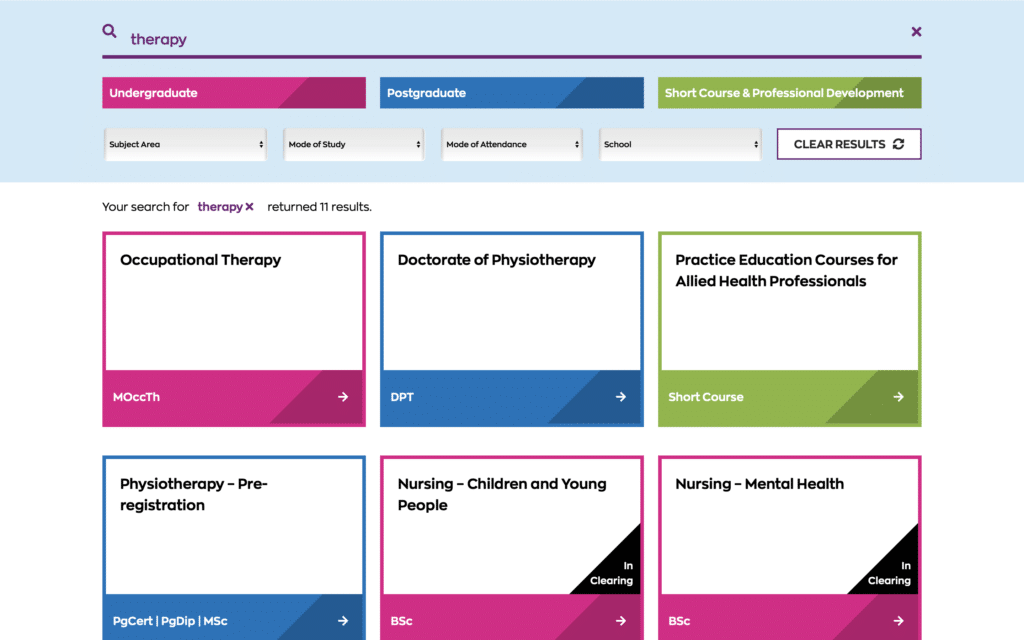When a customer arrives at your site, they may be casually browsing or on a mission to find something specific. What they want is simple: an effortless experience. This is where effective search and browse features come into play, helping them find what they need quickly and easily for a smooth visit.
Navigation is key—whether someone is just browsing or specifically searching, how easily they move through your site can make all the difference. Studies show that users who find what they need quickly are 2.5 times more likely to convert. Striking the right balance between search and browse features is crucial to keeping users engaged, boosting conversions, and fostering loyalty.
In this post, we’ll explore how to align search and browse features with each stage of the marketing funnel to truly satisfy user intent, create an engaging journey, and turn potential conversions into real, measurable results.
Understanding User Intent and the Marketing Funnel
Defining User Intent
User intent is all about understanding what people want when visiting your site. Are they just gathering information, exploring options, or hunting for a specific product to buy? Figuring this out is the key to providing the right experience at the right time—whether through a smooth browsing experience or a powerful search feature.
Overview of the Marketing Funnel
The marketing funnel represents the different stages a user goes through, from discovering a need to making a purchase decision. Here’s how each stage unfolds:
- Awareness: Users become aware of a need or a problem.
- Interest: Users begin exploring potential solutions, often looking broadly at different options.
- Consideration: Users evaluate specific options, comparing products or services.
- Conversion: Users are ready to take action—making a purchase or signing up for a service.
- Retention: Post-purchase, it’s about keeping users engaged, providing value, and fostering loyalty.

Search vs. Browse – The Role of Each in the Marketing Funnel
Search: Catering to Specific Intent
Search is the go-to tool for users with a clear purpose—those in the Consideration and Conversion stages. When users know exactly what they want, they head straight for the search bar, bypassing categories and filters. This is where an efficient, responsive search becomes crucial—it helps users find what they need quickly, reducing friction and increasing the likelihood of conversion. Think of a shopper who knows exactly what they need—a specific product model, for instance. A strong search function means they won’t have to waste time clicking through endless menus; it takes them right where they want to go. A well-optimized search ensures that customers find what they need effortlessly, turning intent into action instead of frustration.
Optimizing Search for Funnel Advancement
To ensure users continue progressing through the funnel, search must deliver the following:
- Relevance: Accurate results matching user queries. Poorly matched results can frustrate users and drive them away.
- Speed: Instant results reduce friction and improve user satisfaction. Users want information fast, meaning speed is key.
- Personalization: Tailoring search results based on individual user behavior can help move them closer to a purchasing decision.
For a deeper dive into the world of search optimization check out our Ultimate Guide to Search Optimization
Tools and Features
- Advanced Algorithms: Implementing AI-driven algorithms can improve the accuracy and relevance of search results.
- Autocomplete and Suggestions: Real-time suggestions help users quickly find what they are looking for.
- Faceted Search: Allow users to refine their results, making evaluating and choosing easier.

According to Econsultancy, site search users are 1.8 times more likely to convert than regular visitors, which highlights how critical search is for meeting user intent and driving conversions.
Browse: Fulfilling Curiosity and Building Interest
Browsing shines in the Awareness and Interest stages, when users are just exploring without a specific product in mind. It’s their opportunity to wander through various categories, discover what catches their eye, and slowly build a connection with your brand. At this point, users are open to inspiration—they might not know exactly what they want, but they are eager to see what stands out. A well-crafted browsing experience should be visually engaging, informative, and seamless, allowing users to explore effortlessly while gaining insights into your products or services. This is the perfect time to showcase your brand’s personality, unique offerings, and the value you bring, ultimately making users feel comfortable and intrigued enough to continue their journey with you.
Enhancing Browsing to Capture Interest
To make browsing effective, businesses should focus on:
- Engaging Content: Leverage visuals, videos, and interactive media. Research shows that videos will account for a whopping 82% of all consumer internet traffic by 2025, underscoring the power of visual content.
- Intuitive Navigation: Menus and category structures should be clear and easily understood.
- Recommendations: Show relevant content and products to keep users interested.
Also Read: How AddSearch’s Education Course Recommendation Works

Integrating Search and Browse Across the Funnel
Seamless User Experience
To keep users happy, knowing when they’re likely to browse and when they’re ready to search is crucial. People often switch back and forth between the two as they move through their journey. Making those transitions seamless helps keep users engaged and makes it easier for them to reach their goals.
Strategies for Integration
- Faceted Search: Combine browsing filters with search specificity, allowing users to refine results whether they’re searching or casually browsing.
- Unified Design: Maintaining a consistent UI/UX for both functionalities ensures a cohesive user experience.
- Content Hubs: Create areas on your website where users can both search and browse, providing multiple ways to explore content.

Personalization and User Intent
Leveraging Data
Understanding user behavior through analytics can help businesses predict users’ needs and provide personalized experiences accordingly.
- AI and Machine Learning: These tools can be used to predict user needs and tailor experiences in real time.
- Segmenting Users: Personalization should cater to different user groups, whether new visitors or returning customers.
While personalization offers a more tailored experience, it’s also vital to consider user privacy and data security. Balancing these is key to building trust with your audience.
Applying the Marketing Funnel to Search and Browse Strategies
Awareness Stage
- Browse Focus: Provide educational content and broad categories to attract visitors in the awareness stage.
- SEO Strategies: Optimize pages for informational keywords that answer user questions.
Interest Stage
- Enhanced Browsing: Highlight product categories, user stories, and other engaging content that builds interest.
- Content Marketing: Leverage blogs, videos, and other resources to foster curiosity.
Consideration Stage
- Optimized Search: Offer detailed product information and advanced search capabilities to help users evaluate options.
- Comparison Tools: Assist users in comparing different products or services.
Conversion Stage
- Streamlined Search: Ensure users can quickly find the products they want and access purchase pathways easily.
- Simplified Checkout: Reduce the steps involved in purchasing, making the process as smooth as possible.
Retention Stage
- Personalized Content: Show recommendations based on previous purchases or user behavior.
- Engagement Programs: Loyalty programs and exclusive offers keep customers coming back.

Best Practices for Implementation
To effectively implement search and browsing functionalities that align with the marketing funnel, consider the following best practices:
- Conduct User Research: Understand what your audience needs at each funnel stage.
- Continuous Optimization: Regularly test and update search and browse features to keep them efficient and relevant.
- Mobile Optimization: Ensure a seamless experience on all devices, as mobile users now make up a significant portion of web traffic.
- Accessibility: Make your website accessible to everyone, including users with disabilities.
- Performance Metrics: Track key metrics such as engagement and conversion rates to understand the effectiveness of your search and browse functionalities.
- Cross-functional collaboration: Align marketing, design, and IT efforts to create cohesive strategies.

Future Trends: Evolving User Intent and the Funnel
User behavior and intent continue to evolve, with new technologies creating new opportunities for businesses to meet user needs.
- Voice and Visual Search: Adapt your search functionalities to accommodate voice queries and image recognition as these become more popular.
- Artificial Intelligence: Use AI to enhance personalization and improve predictive capabilities.
- Omnichannel Experiences: Ensure users have a consistent experience across all platforms, from mobile to desktop.
Conclusion
Knowing when users want to search and when they prefer to browse is the secret to meeting their needs. By aligning these functionalities with the marketing funnel, you can elevate the user experience, boost engagement, and drive conversions. A user-centric approach that anticipates what users need—be it intuitive browsing or a focused search—will make your website stand out from the crowd.
Ready to enhance your website’s user experience? Request a demo from AddSearch today and see how our solutions can help satisfy your users’ intent.









